Defence Strategic Review: The blueprint to defending Australia to be released in days
China’s significant military expansion and coercive behaviour on Taiwan, the South China Sea and the Pacific has forced Australia to supercharge its plans for the next world war.
Last month during an otherwise unremarkable Foreign Affairs, Defence and Trade committee budget hearing, there was a small reference that belied a big impact on our nation’s security.
In 2020 budget discussions, the airstrip on the Cocos (Keeling) Islands was earmarked for a modest upgrade with a widening of its runway, improved parking apron and better drainage.
But fast forward three years and suddenly it’s revealed the project is now to include a 150 metre runway extension, ordinance bunkers, engineering facilities, new lighting for night operations, maintenance hangars and even a new wharf to bring materials from the Australian mainland.
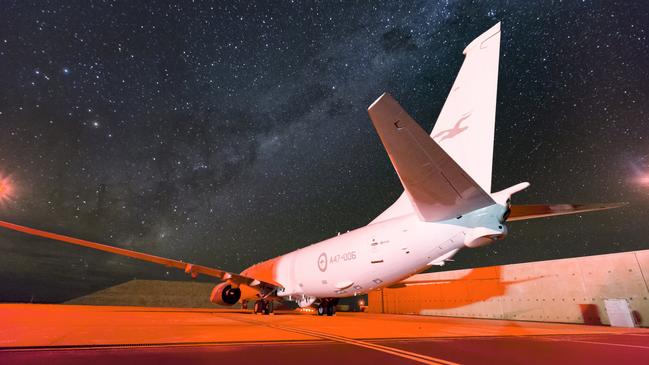
The initial budget of $184 million has more than tripled to $568 million with work on the atoll archipelago airstrip – 2700km north west of Perth in the Indian Ocean – expected to begin by this July.
The change stemmed from high-level military intelligence discussions for the drafting of the Defence Strategic Review (DSR) – a document touted by the Federal Government as “the single most important re-evaluation of Australia’s strategic posture in the last 35 years”.
Thirty five years ago the government released the landmark Defence White Paper that concluded “the generally favourable prospects for security in Australia’s own geopolitical environment”.

Should there be a major conventional warfare attack, the distance, technology and regional disposition gave the country a 10-year warning time to prepare.
By 2020 Defence declared that warning time no longer exists and the incoming Labor Government last year ordered an immediate independent review into our national defences, led by former Chief of the Defence Force Sir Angus Houston and former Labor Defence Minister Professor Stephen Smith and informed by more than 150 leading security and defence experts and personnel.
The pivot is China’s significant military expansion and coercive behaviour and threats not just on Taiwan but the South China Sea and the Pacific and the threat that should conflict occur, Australia’s critical trade route sea lanes would be cut. It summises, Australia’s strategic outlook is deteriorating at its fastest pace since World War 2.
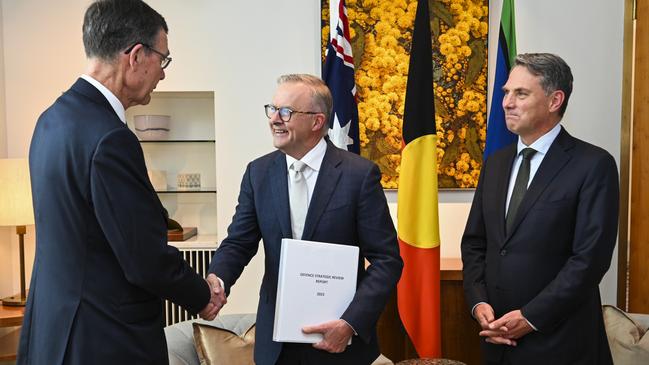
The government was handed the classified DSR report in February with a public version to be released in coming days, outlining what needs to be done to address that challenge.
The DSR is understood to be 18 chapters making 108 recommendations which will change the notion of defence of Australia to “deterrence of Australia”, with a drive to acquire everything long-range to fight a potential adversary well off our shore.
Ukraine has been held up by Defence as a case in point. Both the minnow and its larger predator in Russia have fought less in close quarters and more with long range missiles and drones and high tech technology.
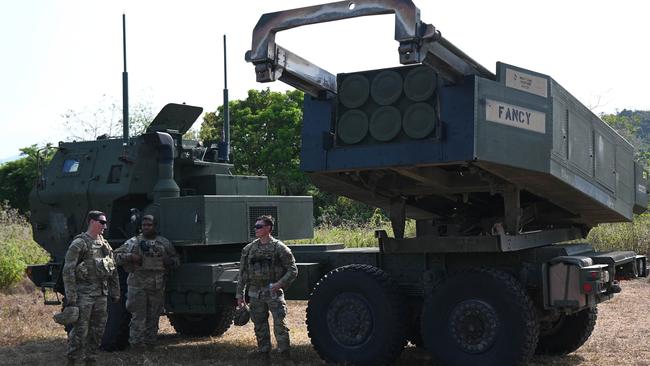
The nuclear-powered submarines to be acquired under the AUKUS pact signed off last month fit in here but so too are aerial armed drones, hardening of our northern bases with defence missile systems, more multi-role stealth F-35s fighters and missiles galore.
There is also a need for speed so plans to build a fleet of nine Hunter-class frigates is expected to be cut down to six with the savings to go toward smaller, faster and better armed corvette warships which could also replace some of the building plans of the Offshore Patrol Vessels (OPVs) which critics point out is already hopelessly outgunned. Instead the DSR could also recommend three new missile firing destroyers.
An entire chapter is dedicated to recruitment of troops and how and where they should be based, deployed and armed.
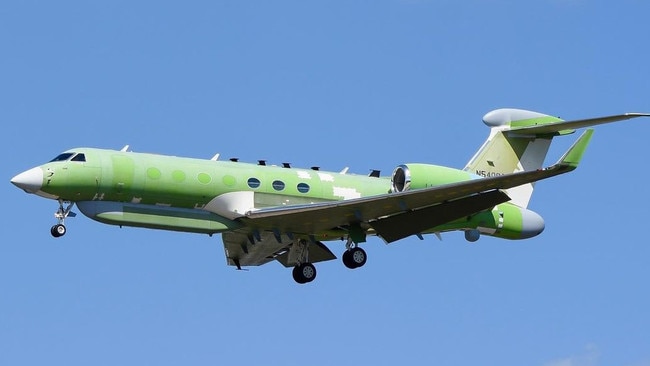
Assets such as Cocos Islands were discussed by the DSR team with its strategic importance growing to make it a key forward operating base for deterrence and “project power beyond the mainland, through and into the region”.
Defence would not comment if the US aircraft, manned and drone, would also be granted access.

The intelligence, surveillance and reconnaissance P-8A Poseidon and the MC-55A Peregrine, a modified Gulfstream G550, will operate from there but not be permanently based there. The first of four Peregrine next generation airborne spy warfare capability, which is undergoing secret test flights between Georgia and Texas in the US, is to be delivered to the RAAF before the end of this year, boosting the RAAF’s offensive and deep electronic attack capabilities. Cheap disposable combat air drones are also expected to be pushed.
Already recently announced and on order, but referenced by the DSR, are more than $1bn worth of multi rocket launching HIMARS, NASAMS air defence systems, another $1bn for sea mines, $2bn for communications upgrades, $300m for Growler upgrades and $2.8bn for new Black Hawk helicopters.
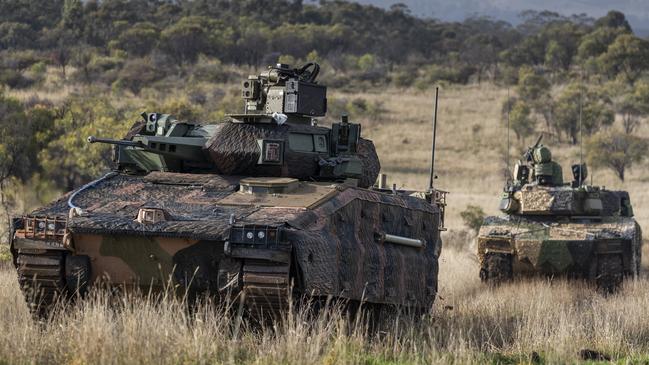
But the DSR is expected to spell out some defining changes to how the Army will operate.
Army had been approved to acquire a new Infantry Fighting Vehicle (IFV) with two tenders for 450 of them at a cost of $27bn. South Korean defence giant Hanwha and its Reb Back and Germany’s Rheinmetall and their Lynx are in the running.
But the need to save money is expected to see that contract reduced to maybe 290 of the tracked “battle taxis”.
“For Army (DSR) is an opportunity not a risk in a sense that they can recast their role to focus on mobility and long range fires rather than traditional close quarter battles,” ASPI senior analyst Dr Malcolm Davis said.
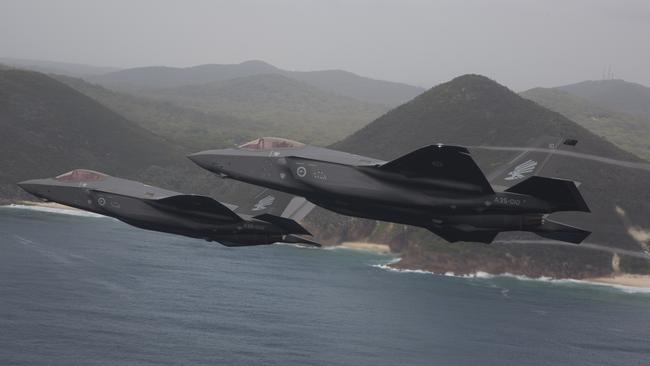
“They would obviously have to have some ability to do close quarter battles if they are going to be expeditionary in nature, for example to deploy into the archipelago to our north in order to deploy HIMARS to attack Chinese ships at sea and so forth.
“But we are going to have to make the cuts from somewhere or have to significantly boost defence spending and I don’t think the government is quite yet ready to make the case to boost defence spending dramatically so in that sense the DSR is going to be an interim step in that process.”
The DSR will be released this month ahead of the May budget.
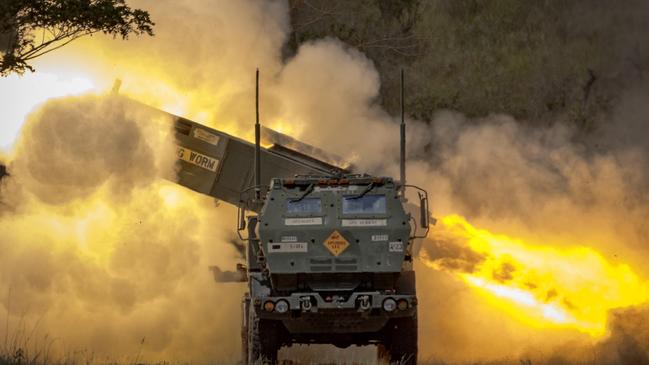
DEFENCE STRATEGIC REVIEW 2023: WHAT MIGHT BE IN, OUT OR ON ORDER
• Infantry Fighting Vehicle (IFV) number could be cut from 450 orders to 290 with up to $10 bn in savings to go elsewhere
• Hunter frigate program possibly cut from nine ships to six with savings to go toward three heavily armed destroyers
• Six mini warship Corvettes could be needed for speed and high firepower, funded from cuts to the order of the under weaponised Offshore Patrol Vessels (OPVs)
• Long-range guided missiles
• Low-cost aerial armed combat drones and undersea drones (deployable from AUKUS acquired nuclear-powered submarines)
• Hardening and expanding of northern base defence missile systems
• More multirole F-35 stealth fighter aircraft
• Sea mines
• Commitment to the experimental “Ghost Bat” unmanned drone development
• Already on order are $111m NASAMS (National Advanced Surface to Air Missile Systems), $2.8 billion for Black Hawk helicopters, $1bn for HIMARS (High Mobility Artillery Rocket System), $1bn for sea mines, $300m for Growlers upgrade, $1.3bn Tomahawk cruise missiles and more than $4.5bn on communication and radar upgrades and acquisitions
COMMENT: AUSTRALIA NEEDS TO INCREASE DEFENCE SPENDING
There is a slang term in the British military with those forced to do something brave or face up to something unpleasant ordered to “grasp the nettle”.
It may initially sting and be uncomfortable but no more than putting it off.
Defence Minister Richard Marles and his PM Anthony Albanese need to do just that with the Defence Strategic Review (DSR) and the defence budget and increase the spend to better reflect our times.
When Labor won the 2007 election it did so on a platform of real growth in defence spending. But it did not do that and indeed in 2010 cut it by 5 per cent and later another 10.47 per cent.
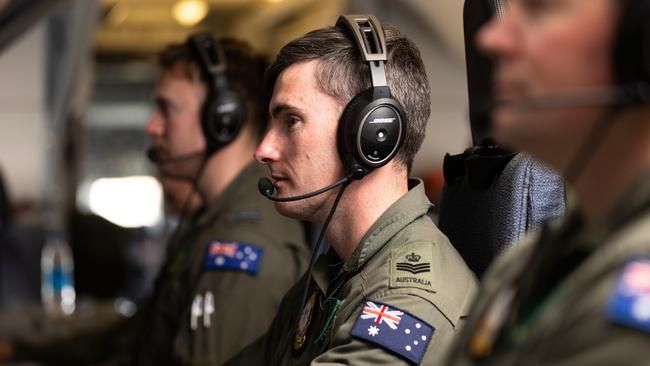
Ironically it was Labor’s then Defence Minister Stephen Smith that was responsible, the independent co-author of the DSR chosen to evaluate the nation’s future defence and security needs.
Australia’s defence spending sits at about $52 billion or 2.11 per cent of gross domestic product (GDP) and is set to naturally rise to 2.2 per cent this year.
The DSR will make cuts to some parts of the ADF to pay for other parts or push costs so far into the future as to make projections irrelevant.
But if the Albanese administration wants to get serious about capabilities and fighting a war at long range within the second half of the decade, as the military predicts, it has to accept it needs to spend a hell of a lot more, at least 3 per cent or maybe even 4 per cent of GDP.
It may not be popular with sections of the electorate particularly if that money has to be pulled from health, education or the NDIS but the case for such a move will no doubt be in the DSR (or at least in the classified version) and like the nettle, needs to be grasped now and told to the public so we don’t get stung in the future.
Originally published as Defence Strategic Review: The blueprint to defending Australia to be released in days




